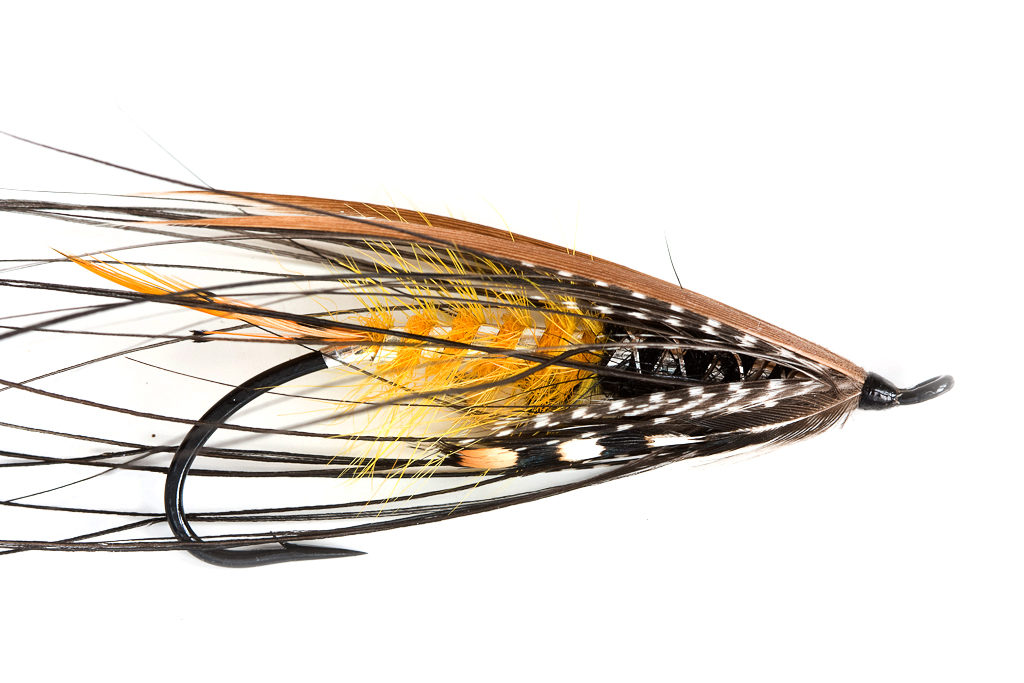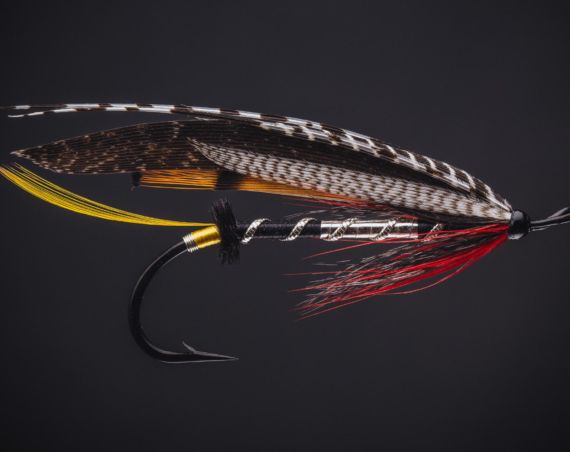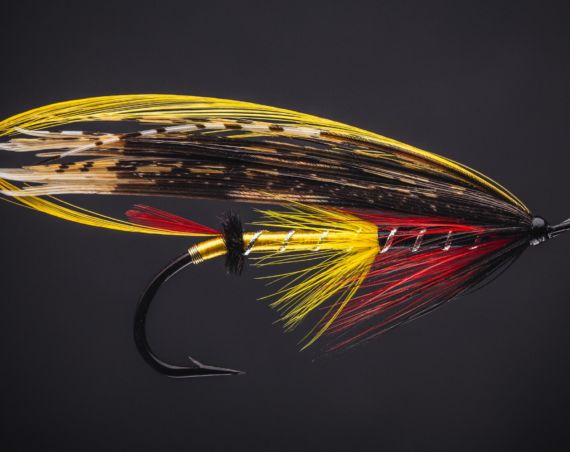Akroyd
A famous Dee fly that was invented by Charles Akroyd according to his book “A Veteran Sportsman’s Diary” (1926) in the year 1875. It soon became one of the most used patterns on the river Dee and has been a favorite of fishermen ever since. There is apparently something about the black and yellow color combo that seems to be effective to both fishermen and to salmon. An easy example would of course be the Jock Scott which is probably the best recognized salmon fly today.
There are few key elements to tying a successful Dee-fly in my mind. The hackles were usually made from Heron which has really long and soft fibers. This is an important factor because the fly doesn’t have much on the top of the hook shank so a heavy hackle will easily turn it upside down. On vintage flies the hackle usually extends to the bend of the hook but not too much over or it will tangle more easily. On the fly pictured the hackle could be shorter. To add some stability to the pattern we can play around a bit with the wings. I usually tie them horizontally and to a slight V-shape so that they will lift the fly in the water as much as possible. Many people tie them more vertically and that is ok also but most of the vintage Dee flies I’ve seen have been made with horizontal wings and I think there’s a reason for it. When you tie the wings in on top of the hook tie them beside each other and not crossing. Crossing the wings will make for an unsymmetrical fly.
On the tail I like to use the wider transitional crests found on the neck of a Golden Pheasant where the crests start to turn in to tippets. I also use Sunburst colored seals fur to give a nice warm color to the body. It’s also a nice mix between patterns since some of them say it’s supposed to be Orange and others Yellow. On the original fly Akroyd says he uses Golden Pheasant crest for the hackle on the Yellow part to give it more translucent and sparkly effect. I use a counterrib to secure the brittle Heron hackle on the front part.
Here’s the pattern per Pryce-Tannatt which is closest to the one pictured.
Akroyd (hook, 1^ to 3 inches).
Tag : Silver tinsel.
Tail : A topping and tippet in strands.
Body : First half, light orange Seal’s fur ; second half, black floss.
Ribs : Oval silver tinsel over the orange Seal’s fur ; flat silver tinsel and twist over black floss.
Hackle : A lemon hackle over the orange Seal’s fur ; a black Heron’s hackle over the black floss.
Throat : Teal
Wings : A pair of cinnamon Turkey tail strips (set flat) White Turkey tail strips are often used, as in Plate VI., in which case the pattern is known as the white-winged Akroyd.
Cheeks : Jungle Cock (drooping).




